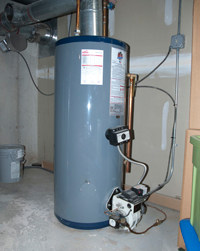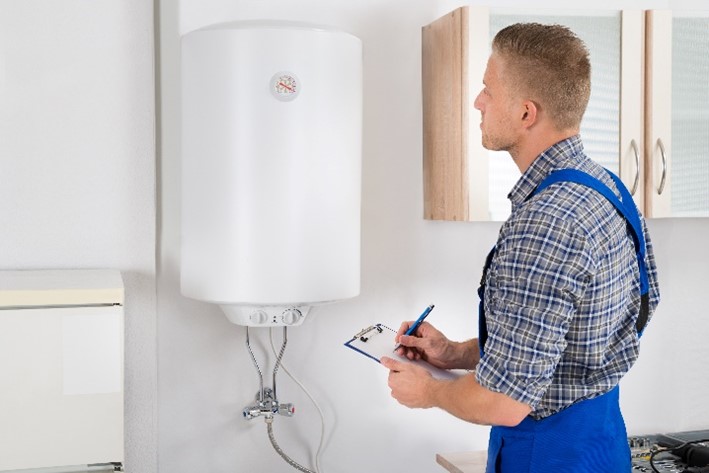Presented here further down you'll find additional good news with regards to How to Maintain a Hot Water Heater in a Few Simple Steps.

Hot water is vital for everyday convenience, whether it's for a refreshing shower or cleaning recipes. To ensure your hot water system runs successfully and lasts much longer, routine upkeep is key. This post provides sensible suggestions and understandings on how to keep your home's warm water system to prevent disturbances and pricey repair work.
Introduction
Maintaining your home's warm water system might seem complicated, but with a few simple steps, you can ensure it operates smoothly for many years to find. This guide covers whatever from understanding your hot water system to DIY maintenance suggestions and understanding when to call specialist help.
Relevance of Keeping Your Hot Water System
Regular upkeep not just expands the life-span of your hot water system but also guarantees it runs successfully. Disregarding upkeep can cause lowered effectiveness, higher energy bills, and even premature failing of the system.
Indicators Your Warm Water System Demands Upkeep
Understanding when your hot water system requires focus can stop major problems. Look out for signs such as irregular water temperature level, unusual noises from the heating system, or rustic water.
Purging the Water Heater
Flushing your hot water heater eliminates sediment build-up, enhancing efficiency and prolonging its life.
Monitoring and Changing Anode Rods
Anode rods protect against deterioration inside the storage tank. Inspecting and changing them when broken is important.
Complex Concerns Needing Professional Aid
Examples consist of major leakages, electrical troubles, or if your water heater is consistently underperforming.
Regular Professional Upkeep Conveniences
Expert upkeep can include thorough examinations, tune-ups, and guaranteeing conformity with security requirements.
Examining and Readjusting Temperature Setups
Adjusting the temperature level settings makes sure ideal efficiency and safety.
Do It Yourself Tips for Maintenance
You can do numerous maintenance jobs yourself to maintain your hot water system in top problem.
Checking for Leaks
Regularly check pipes and connections for leakages, as these can lead to water damage and greater bills.
Comprehending Your Warm Water System
Before diving right into upkeep tasks, it's practical to understand the fundamental parts of your hot water system. Usually, this includes the water heater itself, pipes, anode poles, and temperature controls.
Month-to-month Upkeep Tasks
Normal regular monthly checks can help capture small problems prior to they intensify.
Checking Pressure Alleviation Valves
Evaluating the pressure safety valve guarantees it operates appropriately and prevents excessive pressure accumulation.
Protecting Pipelines
Shielding hot water pipes minimizes warmth loss and can conserve power.
When to Call a Professional
While DIY maintenance is helpful, some concerns require expert experience.
Verdict
Normal upkeep of your home's warm water system is essential for efficiency, durability, and expense savings. By following these suggestions and knowing when to seek professional help, you can make certain a reliable supply of hot water without unexpected disturbances.
Water Heater Maintenance: The Basics
Maintaining your water heater will ensure it operates efficiently and has a longer lifespan. Neglecting regular maintenance can lead to costly repairs and an even bigger chunk of your savings if you have to replace it sooner than necessary. But there’s good news: Most water heater maintenance tasks are relatively simple and easy for homeowners with basic DIY skills.
Flush the Water Heater
Over time, sediment and minerals can build up in the tank, reducing its efficiency and potentially causing damage. To flush the tank, turn off the power or gas supply, attach a hose to the drain valve near the bottom and open the valve to drain the water until it runs clear. Ideally, flush the tank annually.
Replace the Anode Rod
The anode rod is a sacrificial metal rod that helps prevent corrosion inside the tank. Inspect and replace it every three to five years or per the manufacturer's recommendation. To replace the anode rod, turn off the power or gas supply, drain a few gallons of water from the tank, unscrew the old rod and replace it with a new one. If the anode rod is significantly corroded or covered in calcium buildup, it's a sign the water heater may need to be replaced soon.
Tune-Up
A yearly tune-up can help identify potential issues and ensure your water heater operates at peak efficiency. This typically involves checking the thermostat, burner assembly (for gas heaters) and any other components specified by the manufacturer. During a tune-up, the technician may also clean the burner and adjust the pilot light (for gas heaters) or examine the heating elements (for electric heaters).
How to Maintain Your Water Heater
Insulate the tank. Insulating the tank can improve energy efficiency and reduce heat loss, saving you money on energy bills. You can purchase precut insulation blankets designed specifically for water heaters or use standard fiberglass insulation wrapped securely around the tank. Check the temperature. The recommended water temperature for most households is around 120 degrees Fahrenheit (49 degrees Celsius). Higher temperatures can increase energy costs and potentially cause scalding. Use a kitchen thermometer to check the temperature at the faucet nearest the water heater. Monitor water pressure. Excessive water pressure can strain the water heater and cause leaks or even tank failure. Install a pressure-reducing valve if necessary. The ideal water pressure range is between 60 and 70 PSI (pounds per square inch). Test the temperature and pressure (T&P) relief valve. The T&P relief valve is a safety feature that releases pressure if the tank gets too hot or the pressure builds up too high. Test it annually by lifting the lever and allowing a small amount of water to release. Replace the valve if it doesn't release water or reseal properly. Check for leaks. Regularly inspect the tank, pipes and fittings for leaks or corrosion. Deal with issues promptly to prevent further damage. Even a small leak can lead to significant water damage over time. Consider a tankless water heater. If your traditional tank-style water heater is nearing the end of its lifespan ( typically 10 years), consider replacing it with a tankless water heater. These units heat water on demand, reducing standby energy losses and potentially saving you money on your energy bills. Schedule professional maintenance. While homeowners can perform many water heater maintenance tasks, it's still a good idea to schedule professional maintenance every few years. A plumber or HVAC technician can thoroughly inspect the unit, identify potential issues and ensure it operates safely and efficiently. https://www.homeserve.com/en-us/blog/home-improvement/hot-water-heater-maintanence/

I hope you liked our part on How to Maintain a Hot Water Heater in a Few Simple Steps. Thanks so much for spending some time to browse our posting. Make sure you set aside a second to distribute this page if you enjoyed reading it. Thanks a bunch for your time. Return soon.
This Website